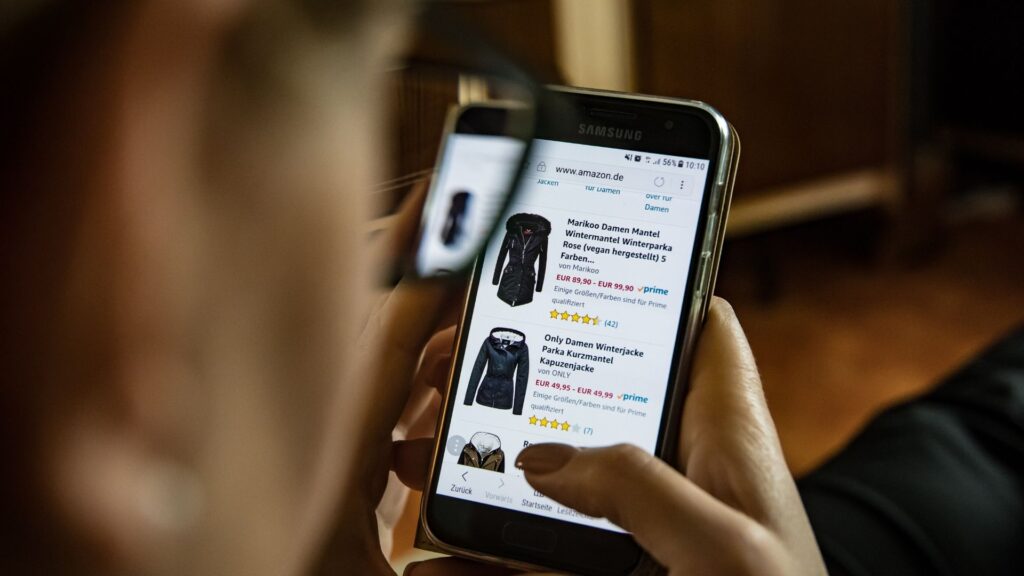Omnichannel, a strategy through which retailers unify online and offline experiences, is becoming increasingly popular and, in fact, necessary, as shoppers clamor for retail options that suit their needs- both online and off.
For any retailers that are considering adopting omnichannel into their business, we’ve outlined some of the key considerations and best practices to abide by when implementing it – with thanks for the industry insight from Richard Brennan, VP of Product Management, ESW.
What is omnichannel?
There is no single definition of omnichannel, with different retailers applying a variety of solutions and approaches to align their online and offline channels. In discussion with Brennan, he explains “Omnichannel can mean many different things to many different people and can vary from industry to industry and sector to sector.”
Why is omnichannel important?
At its core, an omnichannel strategy seeks to unify the in-store retail experience with online to deliver the best value and experience to customers. Brennan continues, “All the research states that omnichannel customers tend to be more valuable over the long term, so it is in the interest of stores and online to foster a culture of sharing customers across both channels.”
Brennan says, “It’s not about integrating two separate businesses, it’s about redesigning the operating model with omnichannel front of mind.”
How can retailers implement a successful omnichannel experience?

Brennan advises, “There are several factors that are needed in order to deliver a successful omnichannel strategy. Mostly it is imperative that both online and offline stores get behind the initiative as it will need tie-in from both, and a culture change might be necessary. Inculcating a culture of sharing customers over both online and offline channels is non-negotiable – rather than one method being considered more important than the other, it’s crucial that both work together.”
In his experience, there are two key areas that are essential for the implementation of an effective omnichannel experience. Firstly, broad recognition of the opportunity to provide a better shopper experience, and secondly, commitment to the process. When these have been considered and a strategy to cover all is effected, retailers should see success from their omnichannel initiatives.
Commitment to omnichannel
Brennan says, “This commitment to omnichannel is key right at the highest level of the organization. There needs to be full organizational commitment and support behind the strategy as it will only be successful if there is an open culture between the retail and online departments. In the luxury sector, it is especially important for both sides of the experience to work together as there might be a personal relationship with staff on the ground that needs to be built on in the online experience.
Generally, if it can be said that if the lifetime value of a shopper is higher by converting from retail to online or vice versa, it’s the most effective strategy to follow.”
A good omnichannel strategy is only as strong as the people who are underpinning it. There can be a lot of challenges for retailers regarding how to ensure retail staff are comfortable promoting shopping online. Some ways to do that include bringing tablets into the store that staff can use to show shoppers more product options that might not be available in-store and ordering it for them then and there for pick up or delivery.
Commission-based retail staff may hesitate to send shoppers online. Therefore, brands should implement a process that incentivises retail staff to create the best experience for the shopper whether that’s online or in-store. Businesses will need to experiment to find the best reward structure for staff.
Opportunity for a better shopper experience (and conversions) – on and offline

Brands that implement omnichannel have the opportunity to turn a potentially poor negative experience into a positive one. When customers are returning goods, for example, retailers can leverage that into a new selling opportunity by allowing shoppers to return goods to store, where there’s a high likelihood of them picking something up in-store and making a purchase whilst returning.
About this opportunity, Brennan explains, “Retailers can train their staff to understand returns and how to upsell. There are also ways that retailers can physically arrange the store to support that initiative, for example placing returns desks at the back of the store so that shoppers must walk through – where something might catch their eye – to return goods, and arrive at the desk with a return and a replacement.”
How is omnichannel retailing is changing the retail industry?
Experimenting with omnichannel doesn’t have to cost a huge amount in terms of new equipment, people, or training. Some stores have run very basic initiatives that haven proven to be very effective. As an example, Brennan relates how “One luxury retailer, interested in setting up a physical store in a new location, reserved a section in a department store in 5th Avenue and booked in appointments using FaceTime for shoppers to speak to experts. There are ways to test the water and see what is an effective strategy and if so, make plans to expand on that.”
He continued, “There is no silver bullet for implementing a successful omnichannel experience. The key factor is a complete embracing of the idea by both management and staff to facilitate the best experience for the shopper no matter what channel they use. There needs to be a culture of collaboration between online and retail so that a win for one is a win for all, not that one area is undercutting the other.
“Successful omnichannel relies on the integration of both.”
Opportunity for a better shopper experience (and conversions) – on and offline:
- Inventory management
Brands can leverage omnichannel can to optimize inventory strategies and reduce costs by connecting stores and online channels intelligently. Having an online system available instore, where staff can either source stock from nearby stores or order online for shoppers and have the order fulfilled from the hub and then either picked up instore or sent directly to the shopper’s desired address is one way of a seamless omnichannel operation benefitting both store and online operations.
- Incentivizing customers to embrace omnichannel
One concern retailers can have when implementing omnichannel is whether customers will embrace it or not. Offering shoppers free gifts or incentives to encourage them to try options such as online ordering in-store with home delivery can help adoption of a new, integrated channel
Brennan gives the example of an ESW client that ran an omnichannel campaign offering free cosmetic samples to drive customers to a flagship store in New York. Engagement was huge and drove footfall into the store. While the initiative didn’t drive a huge uptick in sales, it highlights an important consideration – how is the retailer measuring success? For some, it may be sales, but for others – especially when they are only starting to implement changes, it could be engagement.
The key with omnichannel is iteration – testing and reiterating measures to find out what is successful and how to continue to expand on certain initiatives, and scale back on others that are not driving the right behaviors.
How is omnichannel good for customers?

In a globalized environment, and as shoppers move rapidly from in-store to online and back again – often checking competitors on their smartphones whilst considering a purchase in-store – giving shoppers the power of choice is essential to a successful retail business.
Omnichannel offers a more personalized experience than a store can offer alone. In cities where there is a physical presence, the retailer can use the vast amount of experience built up in that store to drive ‘click and collect’ or BOPIS (buy online, pick up in-store) which can drive shoppers to stores. Where they can potentially make additional purchases while collecting their order
Giving shoppers the option to exchange or return in-store is also a better experience for both retailer and shopper as it can be cheaper for the shopper to do so, but also gives the retailer insight into why the shopper returned the goods.
Brennan advises, “It’s important to get feedback from the shopper, how they found the experience, would they do it again, do competitors offer similar. There may be room to tweak it and enhance the offering.”
Omnichannel for the luxury sector
In the hard luxury sector, where personal connections tend to be more common, it’s important to aim to replicate that personal relationship in an online environment. Again, it’s about experimenting and iteration to find a solution that works best in this sector. For example, Richard Brennan cited that some retailers quoted a 50% conversion rate when shoppers had a personal consultation appointment. Such a high conversion rate might lead some to avoid the online channel, preferring to focus on personal interactions. However, there are ways to build relationships in an omnichannel ecosystem, such as when offering a click and collect service, or when customers return goods to store.
Complexities of international omnichannel
Cross-border can add more complexity with regard to omnichannel – especially for inventory management and managing deliveries or returns to store. When considering an international omnichannel solution it’s important the retailer considers the returns and reverse logistics process.
For example, shoppers that return an item to the store expect an immediate refund. Brands create a poor customer experience when they withhold refunds until returned items pass inspection at a returns hub. A better alternative is to train staff to inspect items on return and issue refunds on the spot. This has the added advantage of providing not only a better shopper experience, but it will more than likely also encourage shoppers to make an additional purchase while instore.
Brennan says, “Some other things to consider when crossing borders – if the product was sourced from a different country for that shopper or if retailers are fulfilling orders from a centralized hub, they need to be careful to reverse out the sale in the same order.
“For example, if the product is coming into the EU for sale to a shopper in the EU, then reselling a returned item within that store could have tax implications to factor in. The simplest solution is to reverse out the original transaction. So, if the purchase is made as a cross-border sale it needs to be returned to a distribution center (with all the necessary paperwork completed) rather than kept in store.”
Conclusion
Implementing omnichannel initiatives can make for exciting times for retailers as they develop the methods that work best for their shoppers, staff, and businesses. There are many details that retailers will need to work out for retailers to offer a seamless omnichannel experience to their customers. But it is certain has that the lifetime value of the customer increases with a joined-up approach. Combining online and offline to create the best shopper experience will lead to better conversion, more satisfied shoppers, and ultimately, higher brand loyalty for the retailer.





